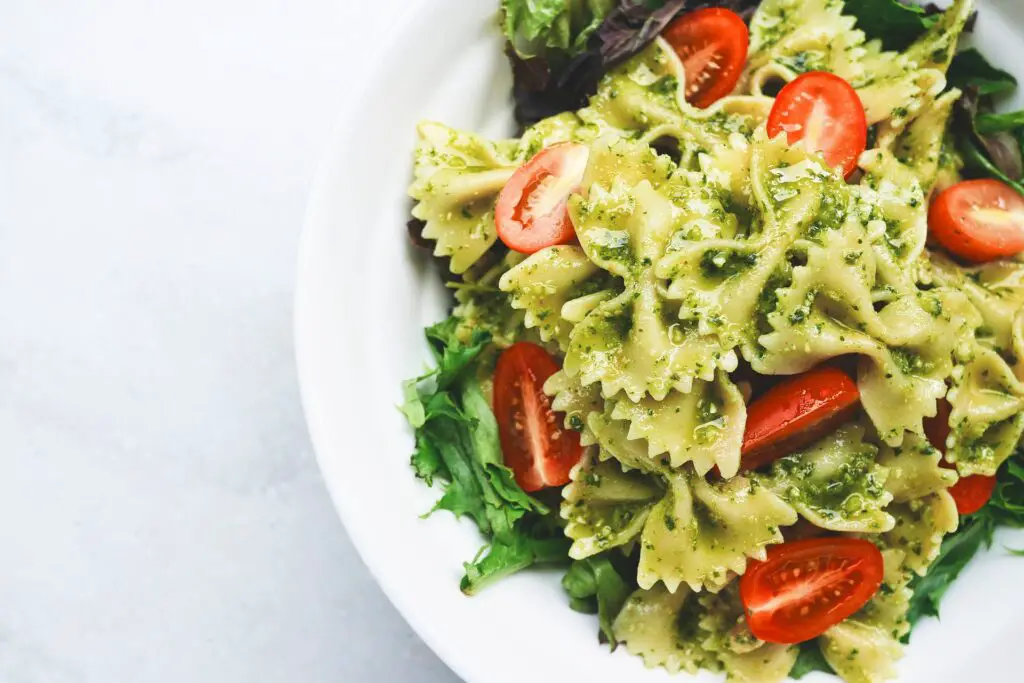For people with irritable bowel syndrome (IBS), eating pasta can be a difficult task. Many people believe that pasta is low in FODMAP, but is this really the case? In this blog post, we will explore the answer to that question and help you decide whether or not pasta is a good choice for your diet.
What is FODMAP?
The acronym FODMAP stands for Fermentable Oligosaccharides, Disaccharides, Monosaccharides, and Polyols. These are all types of carbohydrates that can be difficult for some people to digest. When these carbohydrates are not properly broken down, they can ferment in the gut and cause symptoms like bloating, gas, and abdominal pain. The low-FODMAP diet is a diet that eliminates or restricts foods high in these carbohydrates. While the diet is often used to treat irritable bowel syndrome (IBS), it can also be helpful for other digestive disorders such as Crohn’s disease and celiac disease.
Foods that are high in FODMAPs include grains, dairy, legumes, certain fruits and vegetables, and sweeteners like honey and agave syrup. For people following the low-FODMAP diet, pasta is usually off-limits because it is made with wheat flour, which is a source of both oligosaccharides and polyols. However, there are now several brands of gluten-free pasta made with rice flour or quinoa flour that are low in FODMAPs and safe to eat.
Why are some people afraid to eat pasta because of the potential for FODMAPs?
For those unfamiliar, FODMAPs are a type of carbohydrate that is difficult for some people to digest. They are found in a variety of foods, including wheat, dairy, and certain fruits and vegetables. When someone with a sensitivity to FODMAPs eats food that contains them, they may experience symptoms like bloating, gas, and diarrhea. pasta is made from wheat, which means it contains FODMAPs. However, not all pasta is created equal. While traditional pasta is high in FODMAPs, there are now many brands that offer low-FODMAP options. These pasta are made with alternative flours that do not contain FODMAPs, making them a safe option for those with sensitivities. So if you’re afraid to eat pasta because of the potential for FODMAPs, rest assured that there are plenty of options out there for you.
Is all pasta high in FODMAPs?

FODMAPs are a group of compounds found in various foods that can trigger symptoms in people with irritable bowel syndrome (IBS). While all pasta is made from wheat, there is some debate about whether or not it is high in FODMAPs. The answer may depend on the type of pasta and how it is prepared. For example, traditional Italian pasta made with durum wheat semolina is typically low in FODMAPs. However, pasta made with other types of wheat, such as whole wheat or egg noodles, is usually high in FODMAPs. In addition, many popular brands of pasta contain additives that can increase the amount of FODMAPs. Therefore, it is important to read labels carefully before purchasing pasta. When cooking pasta, it is also important to avoid adding high-FODMAP ingredients, such as garlic or onion. By following these guidelines, you can enjoy pasta without triggering your IBS symptoms.
What types of pasta are low in FODMAPs?
If you’re following a low FODMAP diet, you may be wondering if pasta is off the table. The good news is that there are several types of pasta that are low in FODMAPs. These include spaghetti, elbow macaroni, and quinoa pasta. When cooked al dente, these varieties of pasta have a lower FODMAP load than other types of pasta. This means that they are less likely to cause digestive distress to those with sensitive guts. So if you’re looking for a delicious and nutritious way to enjoy your next bowl of pasta, be sure to choose one of these low FODMAP varieties.
How can you make sure that your pasta is low in FODMAPs?
For those on a low FODMAP diet, pasta is often a suspect food. Many types of pasta are made with wheat, which is high in fructans, a type of FODMAP. However, there are some steps you can take to ensure that your pasta is low in FODMAPs. First, look for a type of pasta made with rice or quinoa instead of wheat. These varieties are generally lower in fructans. Second, be sure to cook the pasta al dente. Overcooked pasta is more likely to trigger digestive symptoms. Finally, avoid adding any high FODMAP toppings or sauces to your dish. By following these tips, you can enjoy a delicious and low FODMAP plate of pasta.
What are some other foods that you can eat with pasta to make a low FODMAP meal?

Is pasta low fodmap? This is a common question for those following a low FODMAP diet. While traditional pasta is made with wheat, which is high in fructans, there are now many varieties of gluten-free pasta available on the market. These kinds of pasta are made with rice, quinoa, or bean flour and are safe for those following a low FODMAP diet.
When it comes to pairing pasta with other foods, there are endless possibilities. For a simple and delicious low FODMAP meal, try pairing your pasta with chicken or shrimp. You can also add vegetables like zucchini or tomatoes. If you’re looking for a more hearty meal, try adding sausage or ground beef. Just be sure to cook the meat thoroughly to minimize the risk of cross-contamination. No matter what you choose to pair with your pasta, you’re sure to enjoy a delicious and nutritious meal that is easy on your digestive system.
Are there any risks associated with eating pasta if you have IBS?
If you have irritable bowel syndrome (IBS), you may be wondering if pasta is safe to eat. IBS is a chronic gastrointestinal disorder that can cause abdominal pain, bloating, and changes in bowel habits. While there is no cure for IBS, dietary tweaks can help to ease symptoms. One common approach is the low FODMAP diet, which involves avoiding certain foods that are known to trigger gut discomfort. Pasta is generally considered to be a high FODMAP food, as it is made from wheat, a common trigger for IBS symptoms. However, there are some low FODMAP pasta options available on the market. These kinds of pasta are typically made from gluten-free flour, such as rice or quinoa flour. If you have IBS and want to enjoy pasta without triggering your symptoms, be sure to look for a low FODMAP option.
Lastly
So, is pasta low in FODMAP? The answer is a little complicated. There are many types of pasta, and some are definitely lower in FODMAPs than others. If you’re looking for a simple answer, white pasta made from durum wheat flour is generally the lowest in FODMAPs. However, if you have gluten intolerance or celiac disease, you should avoid all types of pasta because they contain gluten. For everyone else, experiment with different types of pasta to see which ones work best for you.
Read On;
3